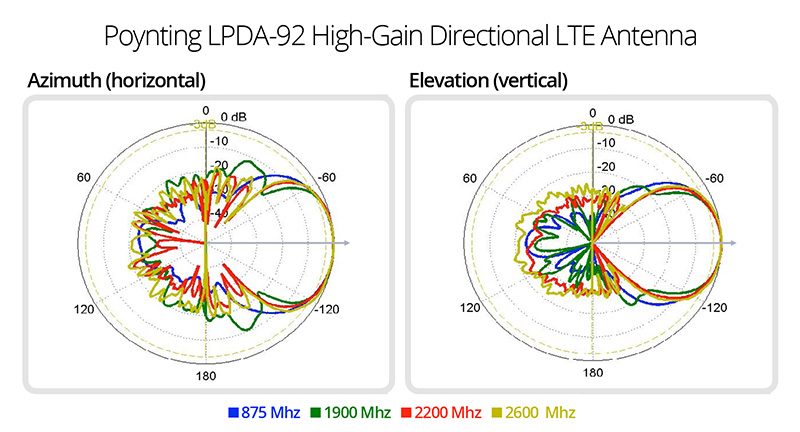Whether you are trying to connect to WiFi or cellular the right antenna is a primary factor determining success. Bundled antennas often deliver minimum performance required for ideal installations, but many factors can interfere with, or attenuate signal transmission.
The following chart shows the relative obstacles to radio wave transmission.
The frequency of a signal also effects how well waves transmit through obstacles and how well signals travel. Low frequency signals like the original 900 MHz bands for cellular are less susceptible to attenuation and travel well over longer distances. Higher frequency signals, like the newer channels used for LTE in the 1700-2500 MHz bands, are more prone to interference and don’t spread as far from the towers. T-Mobile is now using some channels in the 5.2 GHz and 5.7 GHz bands for LTEA Aggregation. These high frequency signals do not move well through barriers and require high tower density because the signal spread is shorter. For example, in dual band WiFi the 2.4 GHz signal will spread better through walls for a whole house installation; the 5 GHz signal, while stronger near the router, may only penetrate a single wall before attenuation makes the transmission unusable. As more bands are used with varying characteristics, mobile, remote, and M2M communications depend more on proper antennas.
Choose the Frequency Band, not the application
It is important to remember that antennas are agnostic to technology. An antenna tuned for 1.7 to 2.7 GHz will work equally well for Cellular, WiFi, or any other transmission within that range. When specifying an antenna upgrade, matching the correct frequency range is more important than the use specified for the antenna or even the stated gain. Since the frequency range is such an important factor, it is critical that an antenna actually delivers the full range advertised, often more important than higher gain.
Poynting antennas deliver level performance over their full frequency range, which is not the case for many other antennas. An antenna listed as having 5-dBi gain may have the 5-dBi gain at only one frequency within the range. The numerical gain is not as important as how widely the gain occurs in the radiation pattern. What distinguishes Poynting Antennas is that they deliver a flat gain across the full-specified frequency bands, a direct function of proper engineering and manufacture.

Example: the radiation pattern for the Poynting LPDA-0092 shows the directional gain pattern for each frequency segment in the specified range. While the off-axis transmission is different for each segment, the directional transmission both horizontally and vertically are nearly identical at all frequencies within the 60° beam width.
Often two antennas will have similar frequency and gain designations, while their results can be significantly different. A thin wire Omni antenna may be within a given frequency band, but the pattern response will be markedly uneven. A more substantial Omni pole antenna will have properly tuned elements inside, engineered to deliver an even pattern response. Poynting only sells careful engineered antennas designed for maximum performance.
Poynting Now Available
Earlier this year Frontier Computer Corp. became the US Distributor for Poynting Antenna. Poynting is a leader worldwide but has had limited availability in the United States.
Poynting is a unique company because is was founded by an electrical engineer. André Fourie, Ph.D. was a professor at University of Witwatersrand, South Africa, and an electromagnetic and antenna consultant when he started Poynting in 2001. Dr. Fourie is listed on over 30 patents, has published more than 50 scholarly papers, and 4 books. He started Poynting to manufacture the antennas he wanted to see in the market. His expertise in antenna technology means Poynting Antennas are designed, from the concept through production to deliver the performance they specify.
FrontierUS has added Poynting to give our partners a high-quality antenna for their customers at a very competitive price. When integrators, providers, and VARs select Poynting antennas, they can be certain the products will deliver the performance their customers expect, which is why FrontierUS is stocking several Poynting models. FrontierUS Partners can add Poynting antennas to their product lines today. Apply here to become a FrontierUS Partner.
Frontier Computer Corp. stocks Poynting and Axxess Marine Antennas, WilsonPro and weBoost cellular amplifiers, and the entire Peplink and Pepwave lines of SD-WAN communications.





